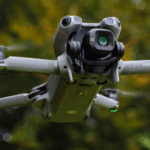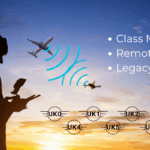Drones have arrived and while there was some early hesitance, their many significant benefits to business have been well-established for some time now.
But still, years later, we are not seeing drones penetrate the economy in the way they should have, or their buyers hoped. This often happens with great new technology developments, but why?
There are many reasons. Some of it will be cultural – there are still some out there who view drones as a threat or a menace, are reticent about learning new ways of working, or simply see them as just the latest fad that will fade away. But those views are very much in retreat now as the ‘head in the sand’ brigade head towards retirement so culture alone can’t account for the lack of penetration.
Regulation
In addition, drones are heavily regulated by the Civil Aviation Authority (CAA) and the regulations are constantly evolving. This regulation is vital to ensure that drones are applied in a safe way but keeping pace with the changes, training pilots to be continually compliant and applying the governance to all of that takes time and creates cost. That alone can kill an organisation’s appetite for drones.
The purchase and maintenance of hardware, image analysis software licenses, insurance, training, regulatory costs on many fronts, lost staff time in ineffective drone operations (£5k one off £13k p.a.) are just some of the costs that can lead to the benefit cases projected from drones not being realised.
Another reason, and linked to culture, is that while some companies are embracing drones, they are scratching the surface of their potential and only using them for a limited range of jobs. For example, maybe they were brought in to inspect a building for damage and that, for some businesses, is all they’ll ever do, perhaps because they don’t know the full application of drone technology.
Which leads us into what I believe is one of the key unrecognised reasons the drone revolution has slowed somewhat. After trying them out, many companies thought they could do this themselves and went out and invested in their own drones to realise the cost and service benefits.
Missed Opportunity
But the reality is, those benefits haven’t been realised because the drones simply aren’t being used. Not because of cultural reasons, but technical and regulatory reasons make it harder than imagined.
In one case study £80k was invested in the new in-house drone set up, only eight flights were ever made as the effort required to continually train staff and run compliant processes became too much, the drones had fallen into dis-use and drone flights were purchased externally as needed. A great solution with many potential benefits became a costly problem child.
So many people rushed out at the start of drones and bought drones – surveyors, estate agents, power companies, emergency services, police, construction, engineering, agriculture and more. The tech is changing rapidly so what they bought quickly goes out of date – sometimes the key champion of drones has moved on or other more pressing projects arise, so they are just sitting there.
Which is not only a waste of the original investment in the technology, but those important cost saving opportunities within the original cost benefit cases are going begging.
Managed Services
But there is another approach that can get everything back on track and deliver even more value, and it’s one that most organisations will be familiar with – managed services.
Managed services take many forms but the one most relevant to drones is cloud computing. In the old days, companies had to buy in not just the computer hardware and software but the servers too, at huge cost
And that cost wasn’t a one off – the pace of change in IT is so rapid that what was cutting edge technology at one point, nears obsolescence in a couple of years.
Which is why cloud computing has taken off in the way it has – it has made cost more manageable but crucially, organisations benefit from real time software and capability updates, usually at no extra cost. And back office and user support is often available from the cloud provider.
To get the most out of drones and to realise those thousands of pounds of organisational savings and open up new revenue streams, organisations need to approach drones in exactly the same way they do their IT – strategically.
That example above has done just that and have engaged Iprosurv to manage their drone fleet on their behalf. In that engagement, they have, at a stroke, removed all these problems and leapt ahead to the cutting edge of what is available to maximise benefit opportunities.
It’s not any real surprise that businesses are struggling to realise the undoubted economic and service benefits of using drones – they are still relatively very new technology and everyone, who is entering the game, is finding their feet.
But some of us have been working with drones from the earliest days, have all the experience and training required, have the inroads and the influence with the regulator and have the expertise to know where the technology is going next.
Iprosurv, founded in 2014, is one of those firms and we stand ready to help you get your own personal drone revolution off the ground and contribute to the wider drone revolution.
Credit: Rebecca Jones CEO – Iprosurv Limited
Cover image credit: PwC – Skies without limits






